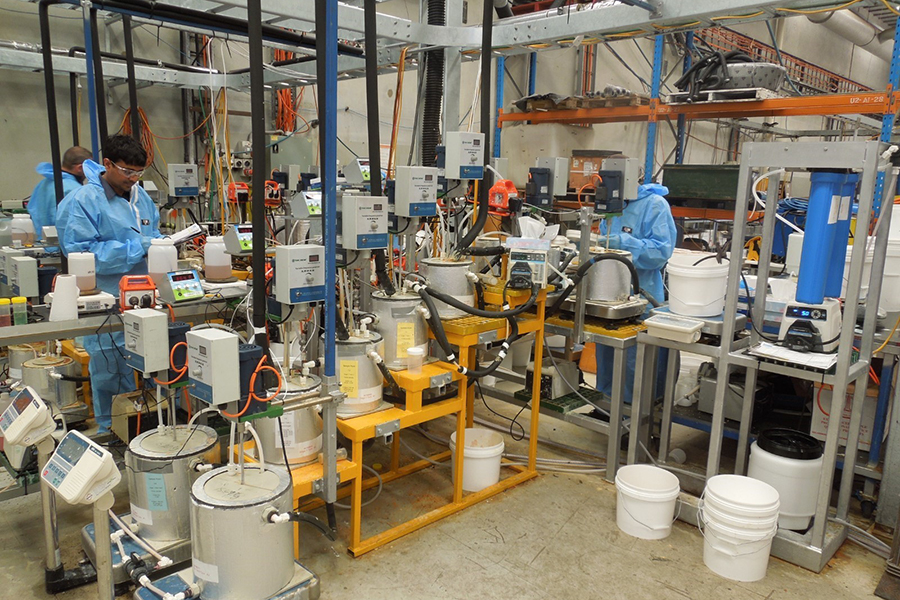We use cookies to give you a better experience on our website. Learn more about how we use cookies and how you can select your preferences.
Arafura Rare Earths – using Australia's natural resources to create clean energy

Research underway at Arafura’s pilot facility in central Australia.
If we hadn't secured the R&D rebate we wouldn't have been able to sustain development of the project. The R&D rebate from around 2012 until 2017 provided the much needed financial support to continue the development of our project.
Company profile
Company: Arafura Rare Earths Ltd
Sector: Resources
Location: Perth, Western Australia
Profile: Arafura Rare Earths is a resources company that is developing a groundbreaking rare earths mine and processing facility in the Northern Territory, 135km north of Alice Springs. Thanks to its long-term investment in R&D, Arafura is well positioned to make the most of the rare earths framework agreement between Australia and the United States.
Why R&D is needed
Rare earths are a collection of chemical elements used in a variety of applications. Two of the rare earths, neodymium and praseodymium (NdPr), are the raw materials in ultra-strong permanent magnets. With permanent magnets integral to the operation of renewable and green technology such as wind turbines and electric vehicles, rare earths play an important role in enabling the energy transition and the reduction of greenhouse gas emissions.
Peter Sherrington, chief financial officer for Arafura Rare Earths, explains that the R&DTI has supported them in developing a novel method for extracting and producing NdPr oxide from minerals at its Nolans site in the Northern Territory. By developing proprietary flow sheet design technology, Arafura has demonstrated the viability of a single site ore-to-oxide production model.
Our company is creating sophisticated processing technology and doing research for an industry that traditionally has had limited exposure in Australia.
Buoyed by investor interest from the bilateral Australia-US rare earth framework the company is now moving toward establishing what will be Australia’s first commercial single site mining and processing operation at the Nolans site. This success comes off the back of over 10 years of investment in R&D, supported by the R&DTI.
As Peter Sherrington puts it “We never undertake our work on the basis that we will get an R&D rebate. But it does mean that we can finish the work and manage our cashflow effectively.”
How the R&DTI helps
Mr Sherrington believes the investment community has traditionally been hesitant to finance innovative projects like Nolans due to the complex nature of rare earths and their difference to other resource industries. He credits the R&DTI with enabling Arafura to continue critical R&D during times when investment opportunities were scarce.
Arafura’s research has funded laboratory and large-scale pilot plants. These not only helped to progress the company’s project but enabled research facilities and external consultants around the country to generate much needed knowledge and expertise. This newly created knowledge will help other companies to start further along in the development process.
When in production, Arafura Rare Earths anticipates that the Nolans project will have a tremendous impact on the local economy and community – creating hundreds of employment and career development opportunities in a region which has had little economic activity.
Arafura has indicated its processing of rare earths will meet waste management regulations and provide traceability from mine to final products – standards which may not apply to overseas companies.
Long term, the Nolans site is expected to produce around 5% of the world’s NdPr demand from later this decade – securing the long-term solutions that will meet the growing demands of tomorrow and positively contribute to the global energy transition.
-
For more information, visit Arafura Rare Earth’s website.
Arafura Rare Earths